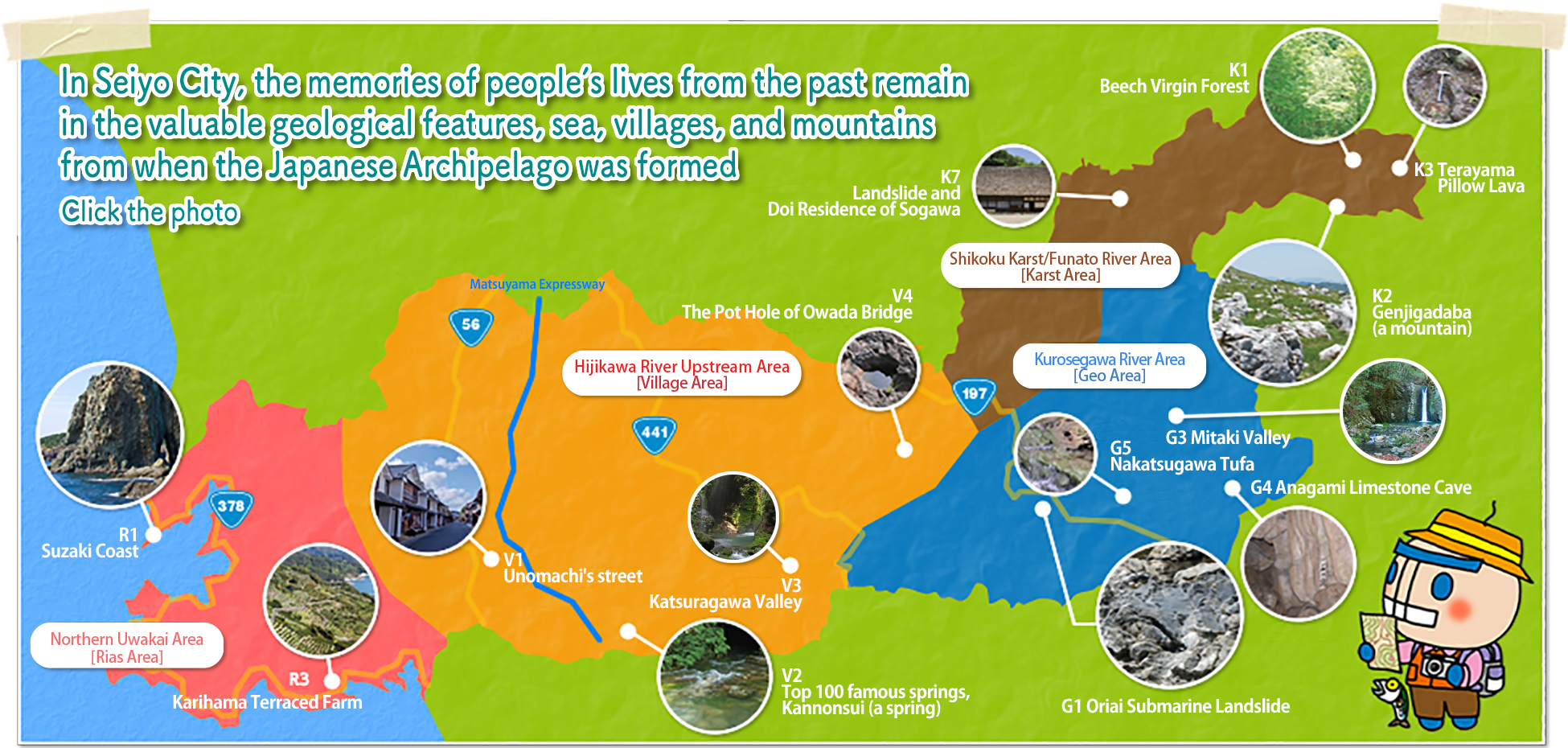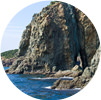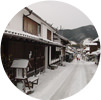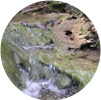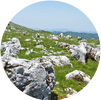R3Karihama Terraced Farm
Karihama 3-208-5, Akehama Town, Seiyo City, 33°18'57.5" N 132°27'33.3"E
The Nanyo District in Ehime Prefecture is famous for its terraced fields. Especially in Karihama, delicious oranges are grown in terraced fields made with stone walls built with limestone and other stones. In this area, sardine net-fishing used to prosper, while on the land, people made terraced fields to cultivate sweet potatoes and barley. Later, terraced fields came to be used as mulberry fields for raising of silkworms, and stone walls were built to prevent runoff of fertilizer for the mulberries. About 60 years ago, orange cultivation started at full scale. This whole area was designated as an Important Cultural Landscape by the government under the name “Uwa Sea Karihama terraced fields and fishing and agricultural village landscape”.















